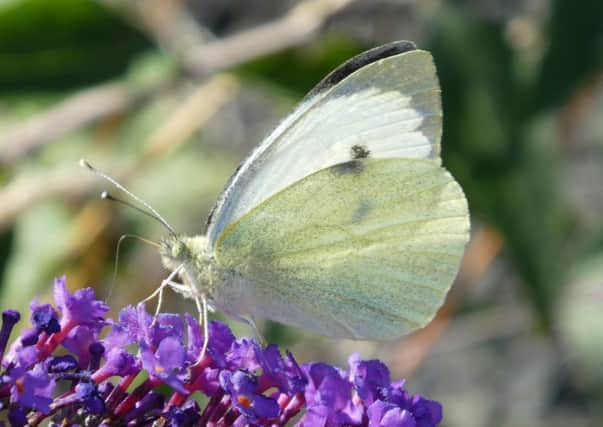Summer shines light on winners and losers in butterfly attraction stakes


The white ones such as Large White and Small White sometimes look like a snow storm in the garden as they flit around from flower to flower to find and sip up the nectar.
Some plants are great at attracting butterflies and others are completely ignored. If you wish to attract butterflies into the garden in mid-summer then plant flowers like Marjoram – they really love clumps of this easy sun lover which has lots of small purplish flowers. The leaves are nicely scented and it is nice to rub your hand through a plant when you pass, and you can then appreciate the sweet scent from the leaves.
Advertisement
Hide AdAdvertisement
Hide AdAt a glance the tall spikes of Teasel may not look like a flower which would attract butterflies. The individual flowers are very small and held in dense cones and are not very showy, but I find the butterflies love them and must be attracted by a sweet scent which is not very noticeable to me.
Of course the Buddleja is the bush to attract butterflies, hence the common name Butterfly Bush, and no garden should be without one or more.
The common species is Buddleja davidii which was introduced from China in the 1890s. It has dense colourful spikes of flowers ranging from deep purple through lilacs, pink to white. Sometimes it can be a bit invasive and seedlings will grow out of tiny cracks in old stone walls.
Another quite different Buddleja has yellow flowers and they are held in dense round balls. This is Buddleja globosa and was introduced from Chile and the Argentine away back in 1774. The butterflies do not lay their eggs on these plants, they only derive their nectar from them.
Advertisement
Hide AdAdvertisement
Hide AdThe caterpillars from white butterflies much prefer our cauliflower and broccoli plants, and will soon strip the leaves and ruin the crop, given half a chance. But to protect them is really quite simple as fine insect-proof nets are readily available, and if they are securely placed over the crop they should be protected.
Nasturtiums, on the other hand, are also a favourite and it would be a bit pointless netting a plant in the flower border as you would hide the flowers and ruin the display, so I think the leaves will soon be gone and the plants ruined.